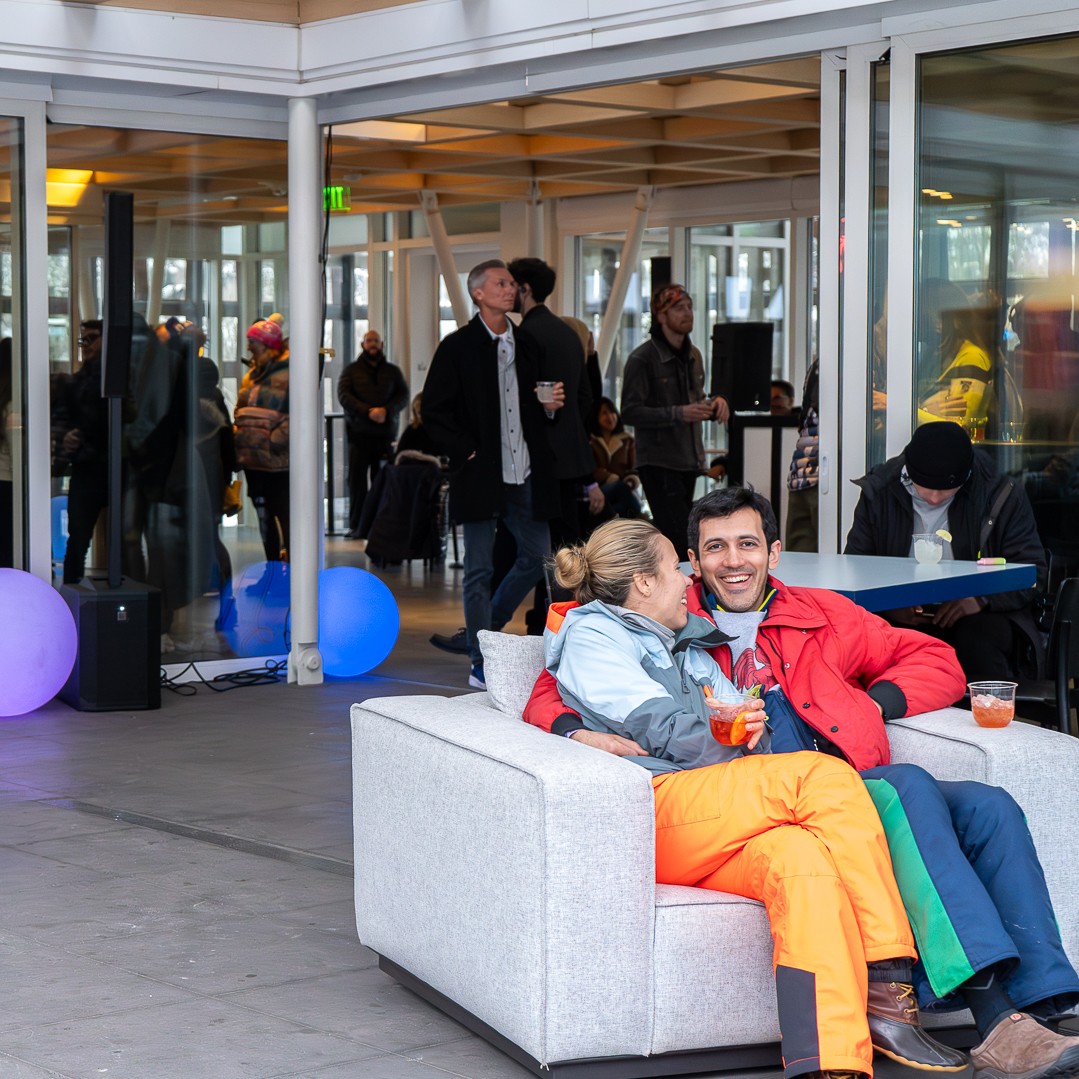Aspen Art Museum
- Join us on May 15 for engaging presentations by our esteemed 2024 Artist Fellowship recipients!
- Categories
- All events
- Talks and Lectures
- Member Events

- For more information on how you can join the AAM, please visit the Street Level Visitor Information Desk, inquire in the Shop, or call 970.925.8050.

- The Rooftop Café is committed to sharing real farm-to-fork experiences with the Roaring Fork Valley. Visit us today!

- Aspen Art Museum is an artist-founded institution dedicated to supporting artists in the development of bold ideas to shape our museum and the field of art today.
Over the last thirty years, Gary Simmons has drawn on popular culture to explore collective experiences of race, class, and identity. Music has played an important role throughout Simmons’ practice, across a variety of media, as he has sought to address questions of individual and collective memory.
Whistle Walk, 2022 belongs to the iconic series of chalkboard works begun in the 1990s, which saw Simmons delve into the Looney Tunes cartoon franchise of the 1930s, whose first characters—Honey and Bosko—found their inspiration in minstrel shows, with their degrading representations of Black Americans. Tracing the outlines of these cartoon figures onto chalkboards, Simmons then works to rub them out, leaving behind smears and tell-tale details of what once has been. Blurred white lines turn the black ground into a murky gray. In Whistle Walk, we can make out oversized feet stepping resolutely forward, with the unidentified character leaning back, head to the sky, whistling away, as they march cheerfully headlong into a disaster set up for comic effect.
Simmons’ gesture is clear: to erase these offensive, stereotypical images. But its inherent impossibility is lucidly expressed by the marks left behind: the endemic, institutionalized racism that permeates our society, beginning even with the supposedly innocent entertainment of childhood, cannot be so easily eradicated. Nostalgia takes on a pernicious edge. Simmons himself explains: “We are all haunted by the past and longing. A ghost is a presence you feel but cannot see. The hidden element in the room, the mental traces that are always with us: personal experiences, fantasies, perceptions, or world events. My work, in general, comes from the memories of events and images that I, and I imagine others, are haunted by.”
Born in 1964 in New York, Simmons lives and works in Los Angeles. He first achieved prominence in the Whitney Biennial in 1993, and his work is collected by major institutions worldwide, including the Museum of Modern Art, New York, the Hirshhorn Museum and Sculpture Garden in Washington, DC, the Museum of Contemporary Art Chicago, and the Museum of Contemporary Art, Los Angeles.
Read the feature on Gary Simmons on page 32 of our Summer Magazine.
Artist Bio
Gary Simmons uses icons and stereotypes of American popular culture to create works that address personal and collective experiences of race and class.
Born in New York in 1964, Simmons received his BFA from the School of Visual Arts in 1988 and his MFA from CalArts in 1990, studying under the tutelage of Charles Gaines, Michael Asher, Catherine Lord, and others. Upon graduation, Simmons established a studio in a former school in New York City. At this stage, he worked predominantly in sculpture, a medium he would return to in subsequent decades. Works from this period, such as Big Dunce (1989), use schoolroom objects to address racial inequality and institutional racism through the filter of childhood experience, themes seen most explicitly in Six-X (1989), comprising six child-sized Ku Klux Klan outfits hanging from a schoolhouse coat rack.
Simmons’ use of pedagogical motifs, in particular readymade chalkboards, led to the formal and aesthetic breakthrough that would inform much of his subsequent work, in which erasure of the image has been a powerful and recurring theme. The tropes of erasure and ephemerality suggest the fleeting nature of memory and histories re-written. Simmons draws from popular culture, music, vernacular, and cartoon imagery, specifically the racist characters of early animations. A landmark piece commissioned for the Whitney Biennial, Wall of Eyes (1993), explored the aesthetic possibilities of chalkboard at a monumental scale. Simmons drew cartoon eyes in chalk over slate paint applied directly to the wall, then deliberately hand-smudged the chalk lines. As the artist explains, “I started to think about how images on blackboards can never be fully erased. It was about trying to erase a stereotype and the traces of the racial pain that you drag along with you.”
In further key commissions, Simmons has expanded beyond the confines of museum and gallery walls, creating performative and site-specific works which underline a relationship to a trajectory of art history that includes minimalism and conceptual art. For Sky Erasure Drawings (1996), commissioned by the Chicago Museum of Contemporary Art, airplanes temporarily inscribed vapor stars in the daytime sky in liquid paraffin. For his immersive installation, Fade to Black (2017), for the California African American Museum in Los Angeles, Simmons created five monumental wall murals featuring the titles of vintage silent films; the names of largely forgotten movies and African American actors appeared in big typewriter-style letters blurred with ghostly traces. In a recent series of works, Simmons mines the architecture of surveillance through depictions of watchtowers and lighthouses. Deliberately ambiguous, these works collapse the boundaries between signifiers of safety and those of control.
Simmons’ immersion in music has continually informed his practice which draws inspiration from dub, punk, hip-hop, reggae, and rap. Particularly influenced by the genres’ race and class-focused politics, the artist has created several works tracing the voices in music that have shaped contemporary culture. Simmons attracted significant critical attention in 2014 for his stacked speaker piece Recapturing Memories of the Black Ark. Inspired by Jamaican sound systems, the work was a living sculpture, with musicians invited to utilize it for performances and then leave whatever configuration they had used for those performances. The work’s ongoing history offers a contrasting and complementary approach to the record of the past provided by the artist’s well-known erasure series of paintings.
For a site-specific installation commissioned for Culture Lab Detroit in 2016, Simmons was inspired by the guerrilla marketing style of fly-posting to promote gigs. Using found posters from flea markets and the internet, he manipulated the originals, saturating the colors or reworking the texts before layering them onto plywood or surrounding walls. These works evoke the fragmentation between individual and collective memory that preoccupies much of Simmons’ practice.
To register a bid or to request a condition report, please contact bid@aspenartmuseum.org.
free courtesy
Amy & John Phelan
- Aspen Art Museum
- 637 East Hyman Avenue
- Aspen, Colorado 81611
- t: 970.925.8050
- f: 970.925.8054
- info@aspenartmuseum.org
| Hours |
|
Tuesday–Sunday, 10 AM–6 PM
Closed Mondays
|
© 2024 Aspen Art Museum
General operating support is provided by Colorado Creative Industries. CCI and its activities are made possible through an annual appropriation from the Colorado General Assembly and federal funds from the National Endowment for the Arts.



General operating support is provided by Colorado Creative Industries. CCI and its activities are made possible through an annual appropriation from the Colorado General Assembly and federal funds from the National Endowment for the Arts.
















